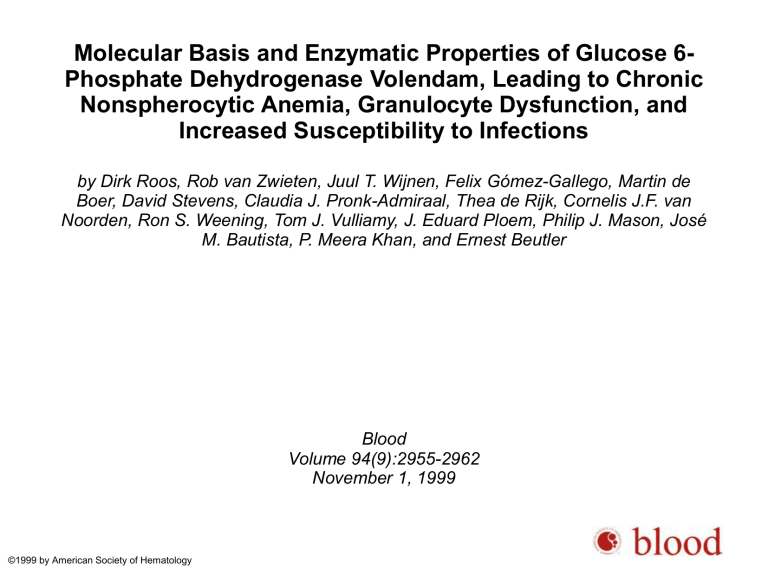
Molecular Basis and Enzymatic Properties of Glucose 6Phosphate Dehydrogenase Volendam, Leading to Chronic
Nonspherocytic Anemia, Granulocyte Dysfunction, and
Increased Susceptibility to Infections
by Dirk Roos, Rob van Zwieten, Juul T. Wijnen, Felix Gómez-Gallego, Martin de
Boer, David Stevens, Claudia J. Pronk-Admiraal, Thea de Rijk, Cornelis J.F. van
Noorden, Ron S. Weening, Tom J. Vulliamy, J. Eduard Ploem, Philip J. Mason, José
M. Bautista, P. Meera Khan, and Ernest Beutler
Blood
Volume 94(9):2955-2962
November 1, 1999
©1999 by American Society of Hematology
Pedigree of the patient’s family.
Dirk Roos et al. Blood 1999;94:2955-2962
©1999 by American Society of Hematology
pH curve of G6PD Volendam.
Dirk Roos et al. Blood 1999;94:2955-2962
©1999 by American Society of Hematology
Analysis of genomic and complementary DNA from the patient with G6PD Volendam and her
family.
Dirk Roos et al. Blood 1999;94:2955-2962
©1999 by American Society of Hematology
Dirk Roos et al. Blood 1999;94:2955-2962
©1999 by American Society of Hematology
Dirk Roos et al. Blood 1999;94:2955-2962
©1999 by American Society of Hematology
Segregation of a skewed pattern of X-chromosome inactivation.
Dirk Roos et al. Blood 1999;94:2955-2962
©1999 by American Society of Hematology
Electrophoretic mobility of rG6PD B and rG6PD Volendam. rG6PD B and rG6PD Volendam were
electrophoresed in native 5% polyacrylamide gel.
Dirk Roos et al. Blood 1999;94:2955-2962
©1999 by American Society of Hematology
